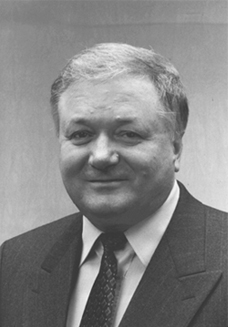 |

The Richness and Beauty of the Physics of Cosmological
Recombination

Thursday, October 27, 2009
7 p.m., ACES 2.302 - Avaya Auditorium [map]
Dr. Rashid Sunyaev
Head of the High Energy Astrophysics Department, Russian Academy of Sciences
Chief Scientist of the Space Research Institute, Russian Academy of Sciences
Director of the Max Planck Institute for Astrophysics, Garching, Germany
Abstract
The initial temperature of radiation in our Universe was very high and hydrogen and helium were completely ionized. At redshifts z ~ 1400
the temperature dropped to 3800 K and, according to the Saha equation, the recombination of hydrogen should occur. In reality this
process is strongly delayed and some frozen amount of electrons should be present till the reionization of the Universe at z ~10.
Process of recombination defines the position and the width of the last scattering surface which is crucial for the formation of the observed
angular fluctuations of cosmic microwave background radiation (CMB), acoustic peaks and barionic oscillations in the distribution of
galaxies and clusters of galaxies.
The recombination of hydrogen occurs under conditions
of very low density and in the presence of black body radiation. As a result, usually insignificant atomic processes begin to play a role.
They influence the shape of CMB acoustic peaks at a level which will be
detectable by the "Planck Surveyor" spacecraft and we should take them into account when estimating the key parameters of the
Universe from CMB data.
The recombination of hydrogen and helium leads to the appearance of recombinational lines in millimeter, centimeter and decimeter
spectral bands. Observations of these lines will make it possible to check the predictions of the big bang recombination theory and will
open a possibility to measure directly the density of barions, the CMB monopole temperature and specific entropy of the Universe, to check
the presence of any significant energy release in early Universe (for example due to decay of unknown particles). Observations of helium
recombination lines originated at redshifts 6000 and 2500 will open a way to measure the prestellar abundance of helium in the Universe.
Dr. Sunyaev has been a member of the Russian Academy of Sciences since 1984 and the U.S. National Academy of Sciences
since 1991. His high-profile awards include the Bruno Rossi Prize, Heineman Prize, and Henry Norris Russell Lectureship (American
Astronomical Society); the State Award and Alexander Friedman Award (Russian Academy of Sciences); the Gruber Prize in Cosmology;
The Crafoord Prize; the Karl Schwarzchild Medal (German Astronomical Society); and the Gold Medal of the Royal Astronomical
Society (Great Britain).
Dr. Sunyaev is perhaps best known as co-author of the
Sunyaev-Zel'dovich effect or SZ effect (proposed with
Dr. Yakov Zel'dovich) which is the result of high-
energy electrons distorting the cosmic microwave
background radiation (CMB) through inverse Compton
scattering. Observed distortions of the CMB spectrum
are used to detect the density perturbations of the
universe.
See also:
In Memoriam: Antoinette de Vaucouleurs
This lecture is sponsored by The Endowment for the Antoinette de Vaucouleurs Memorial Lectureship and Medal.
|
